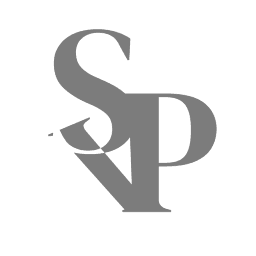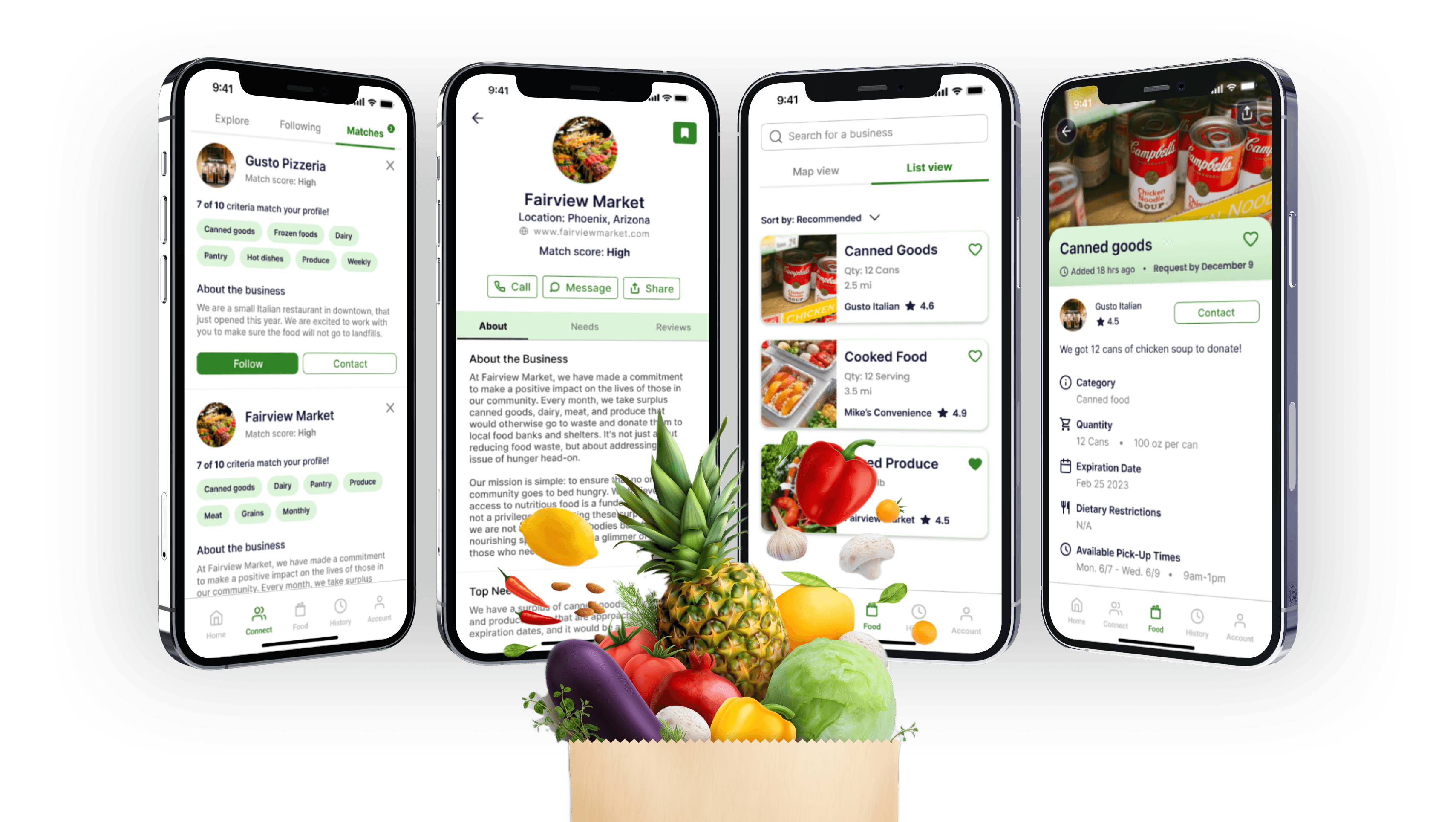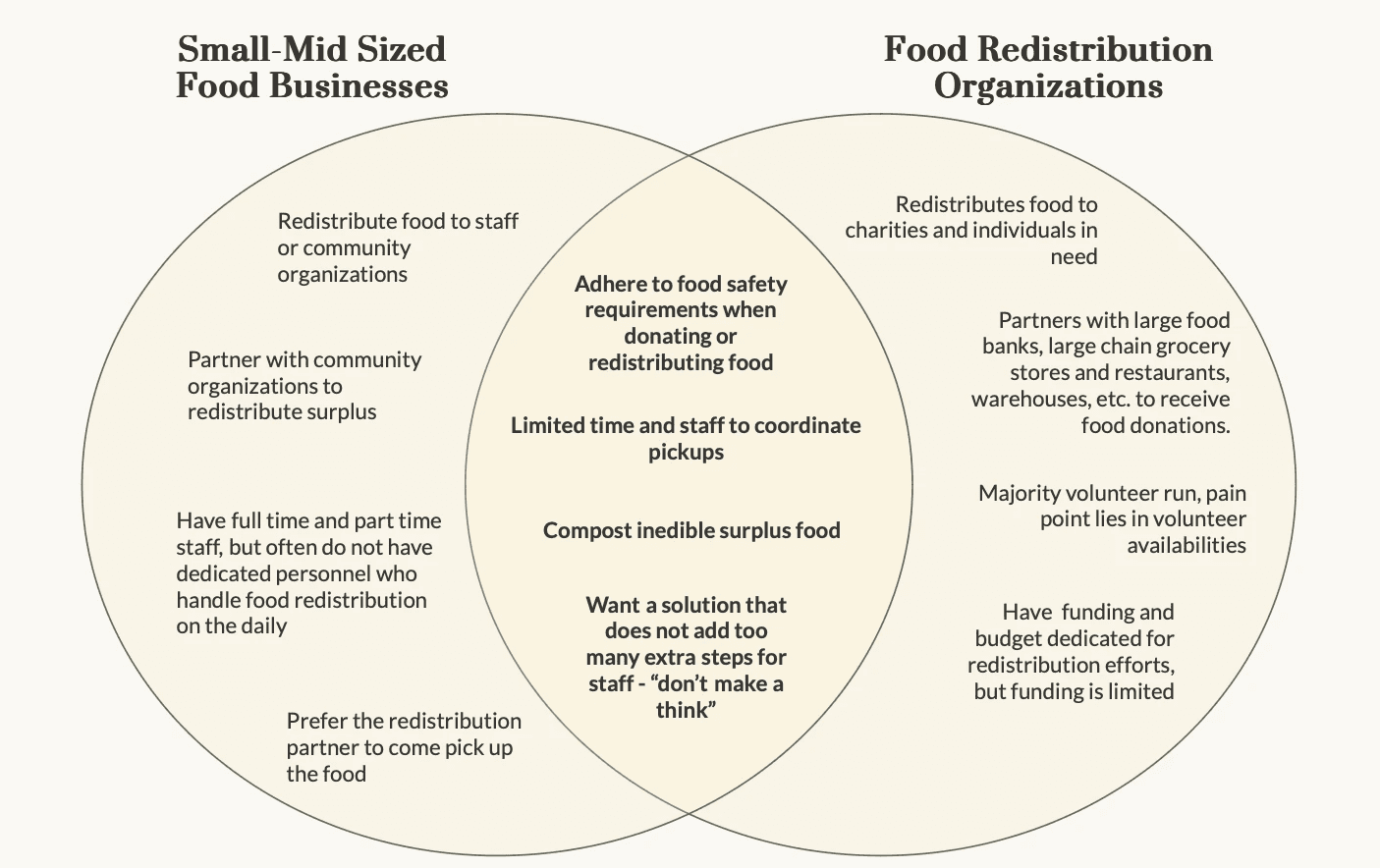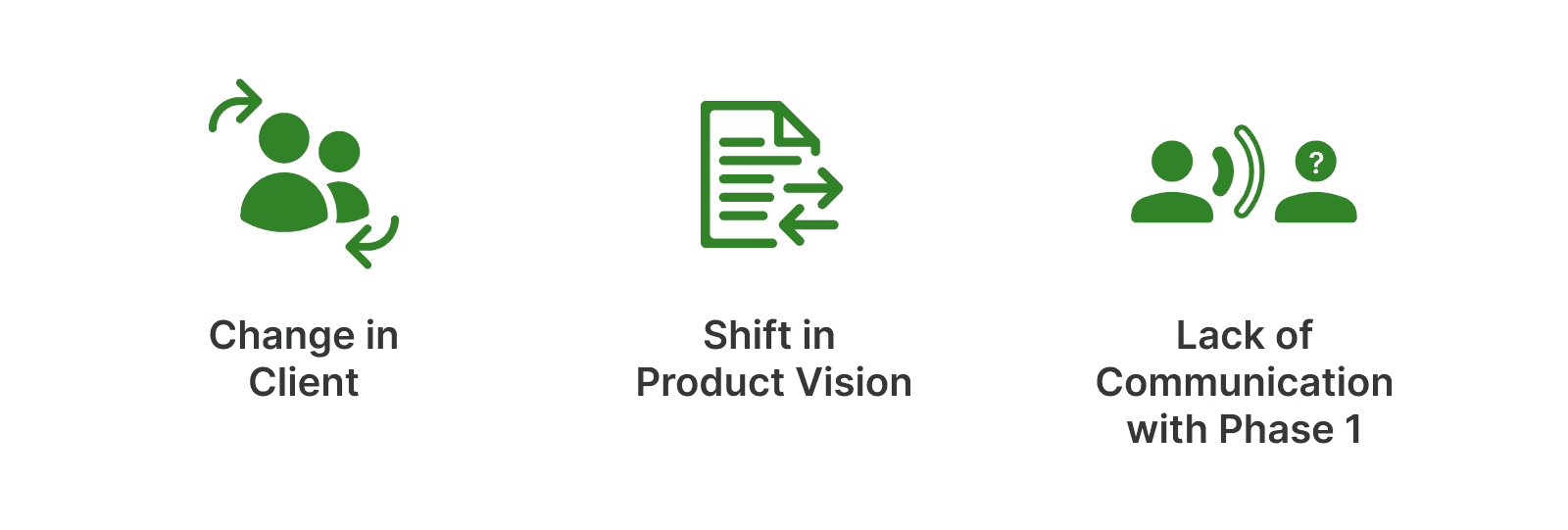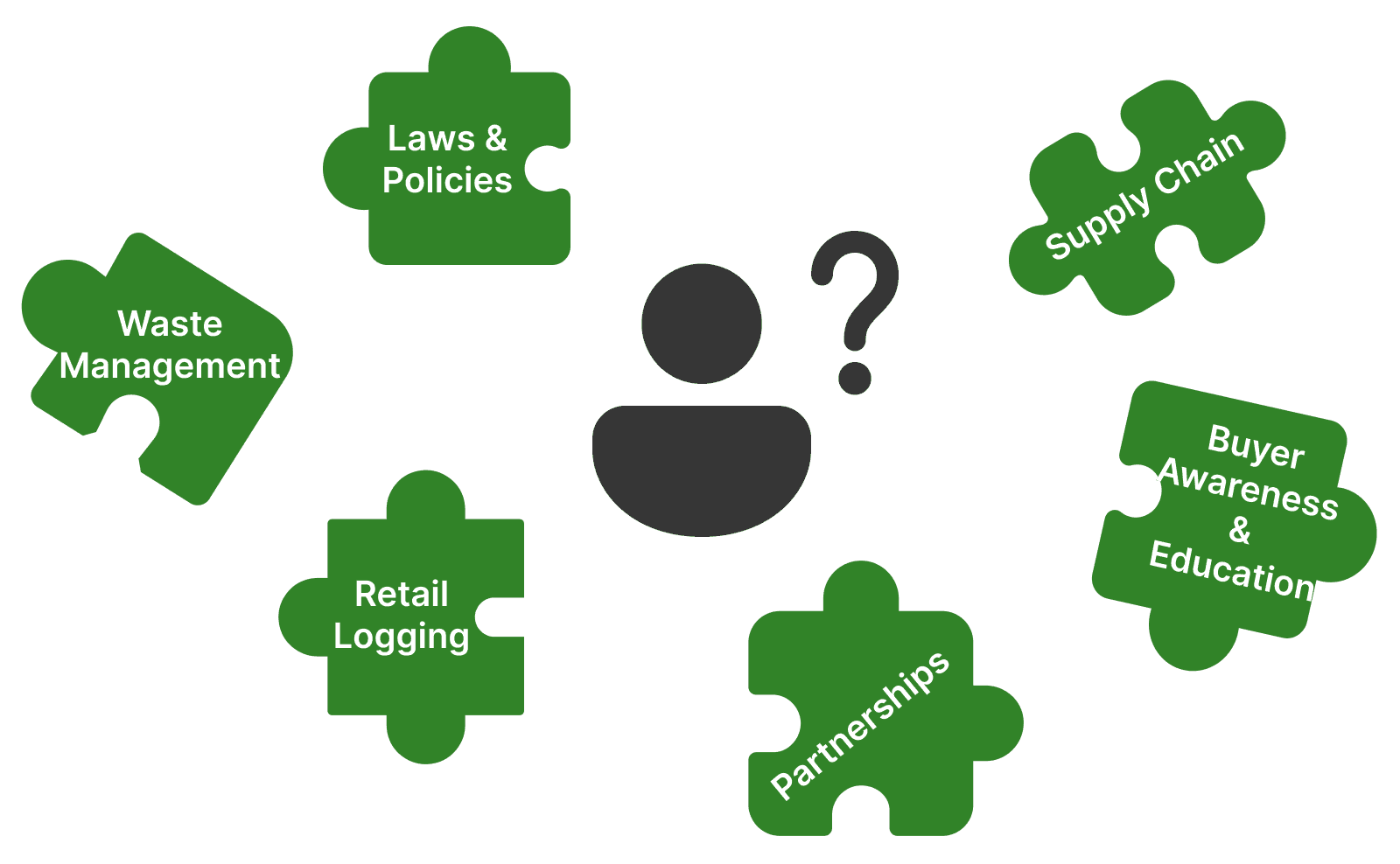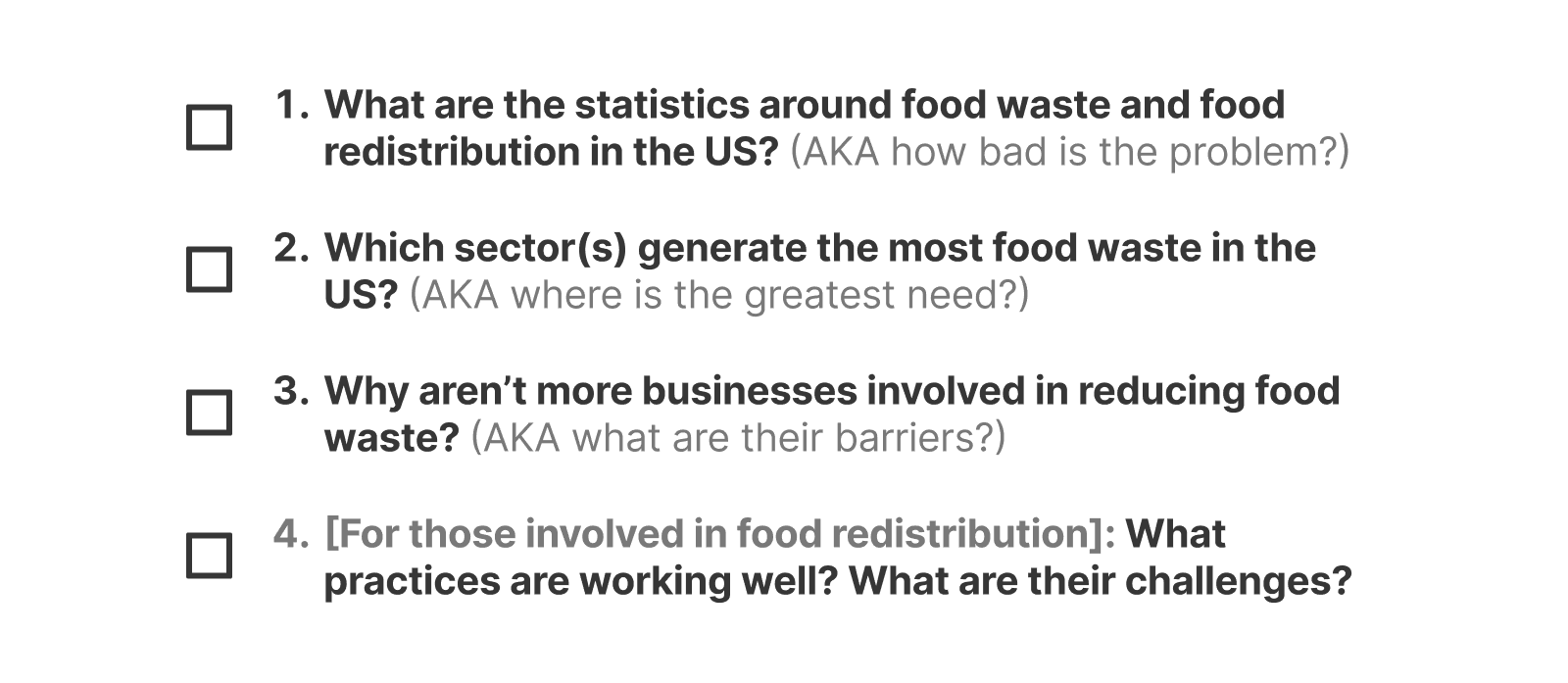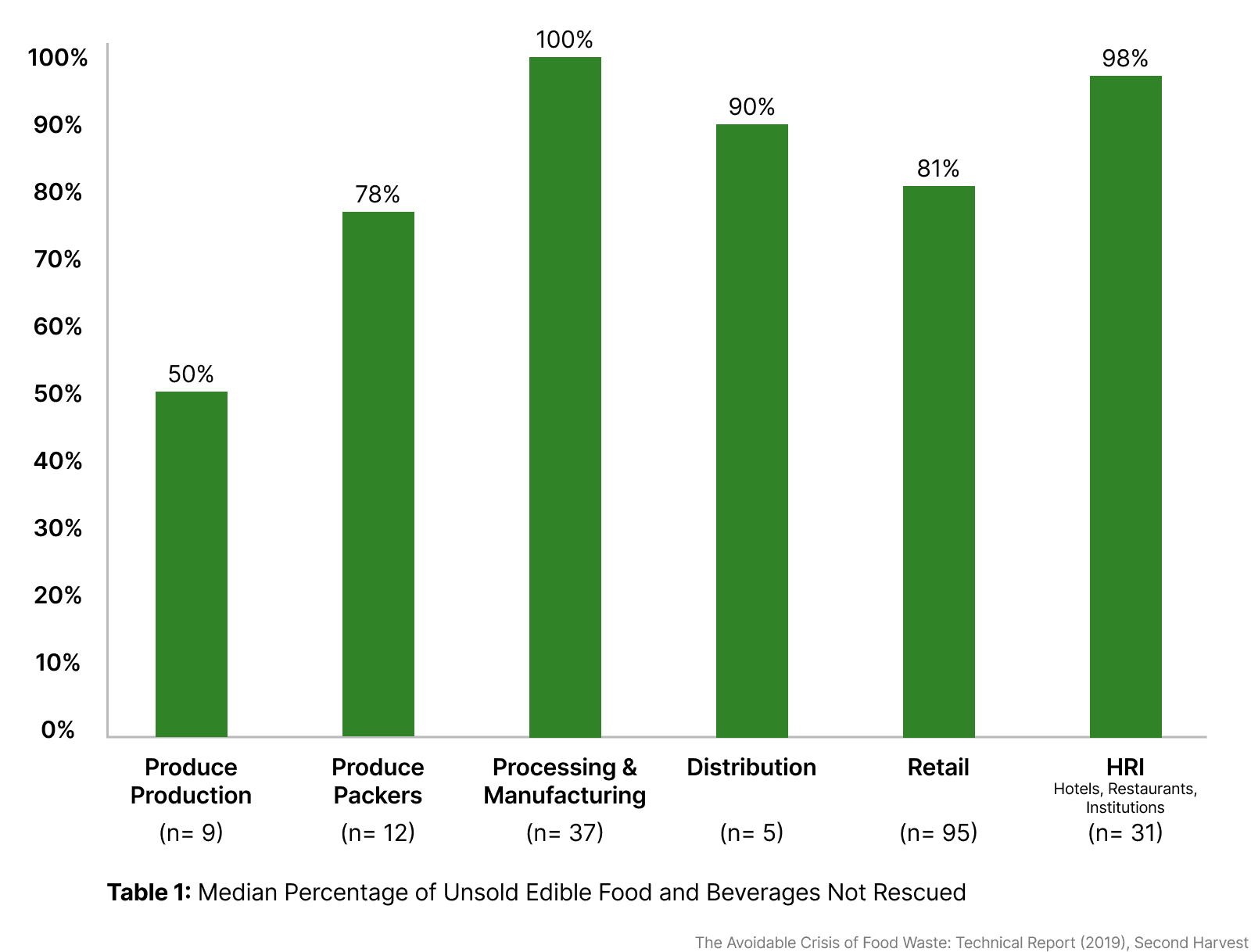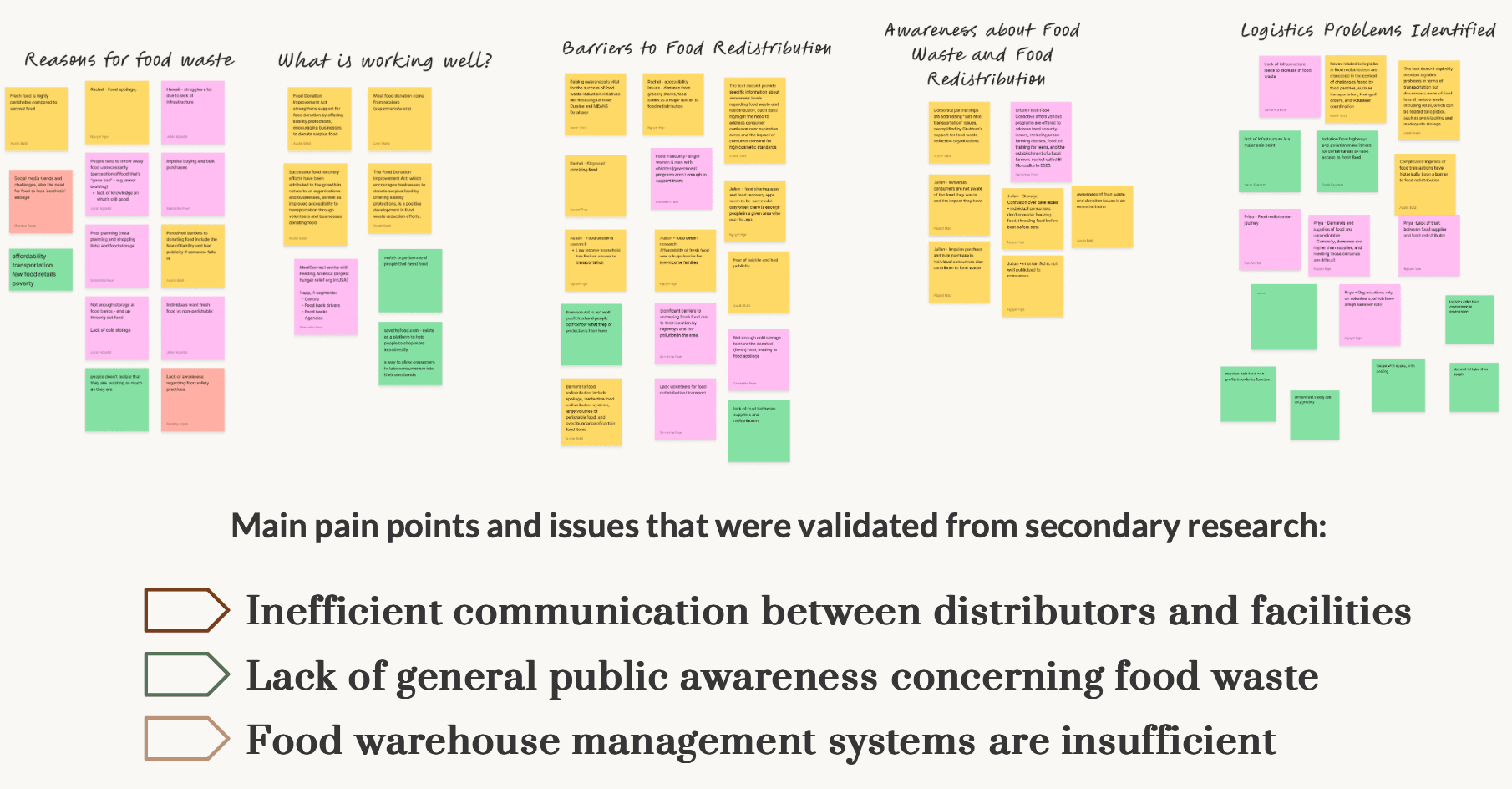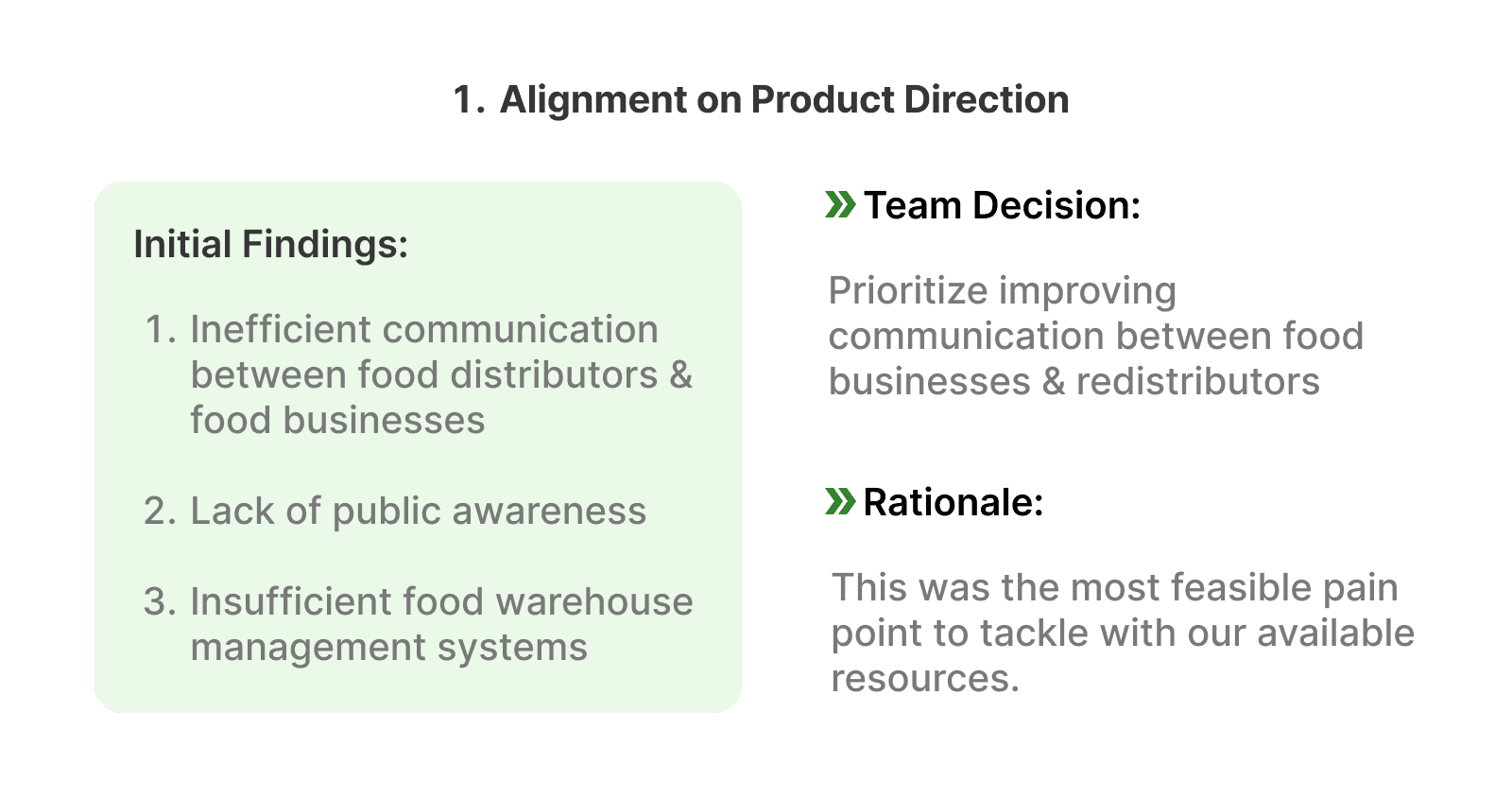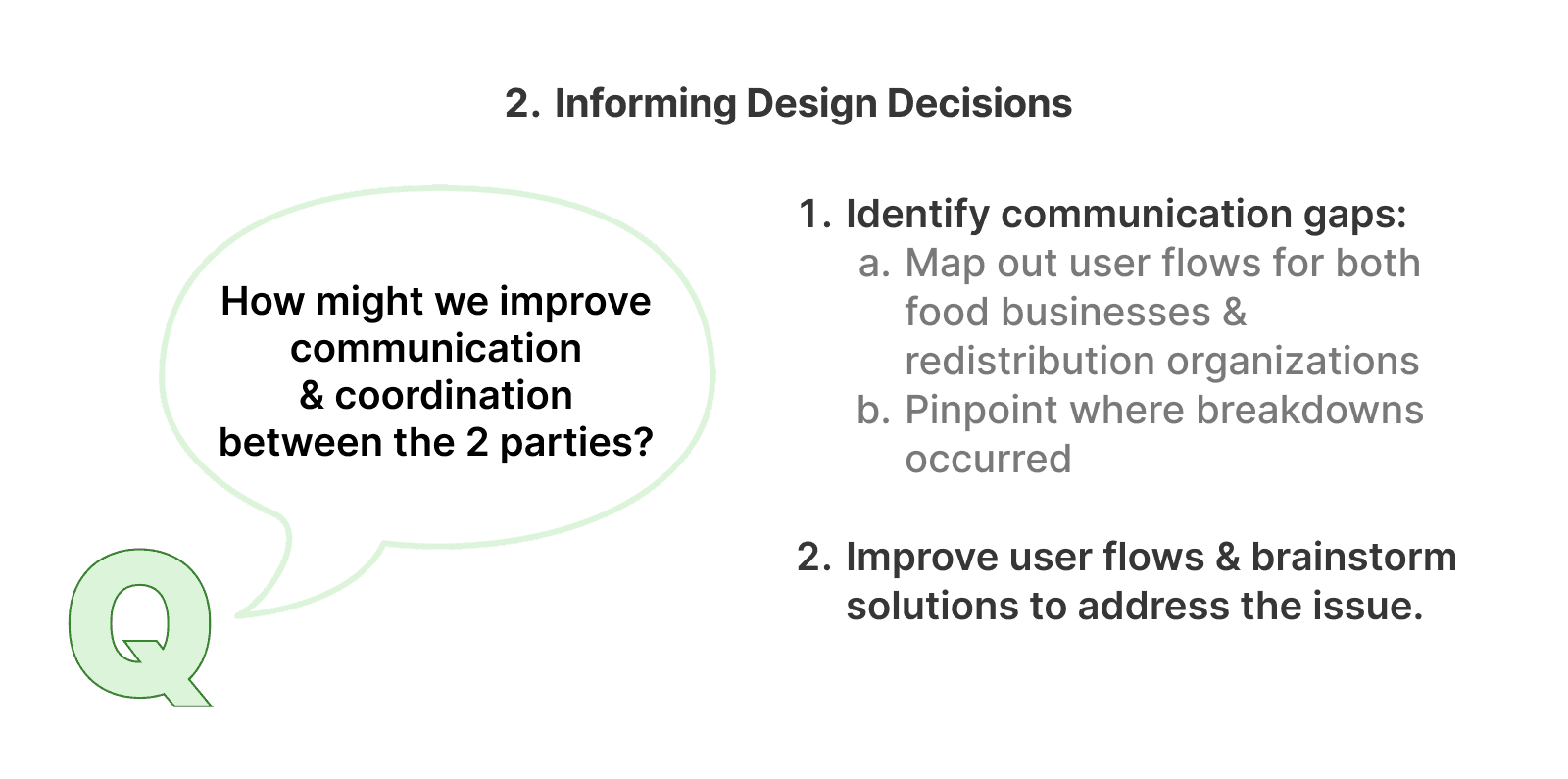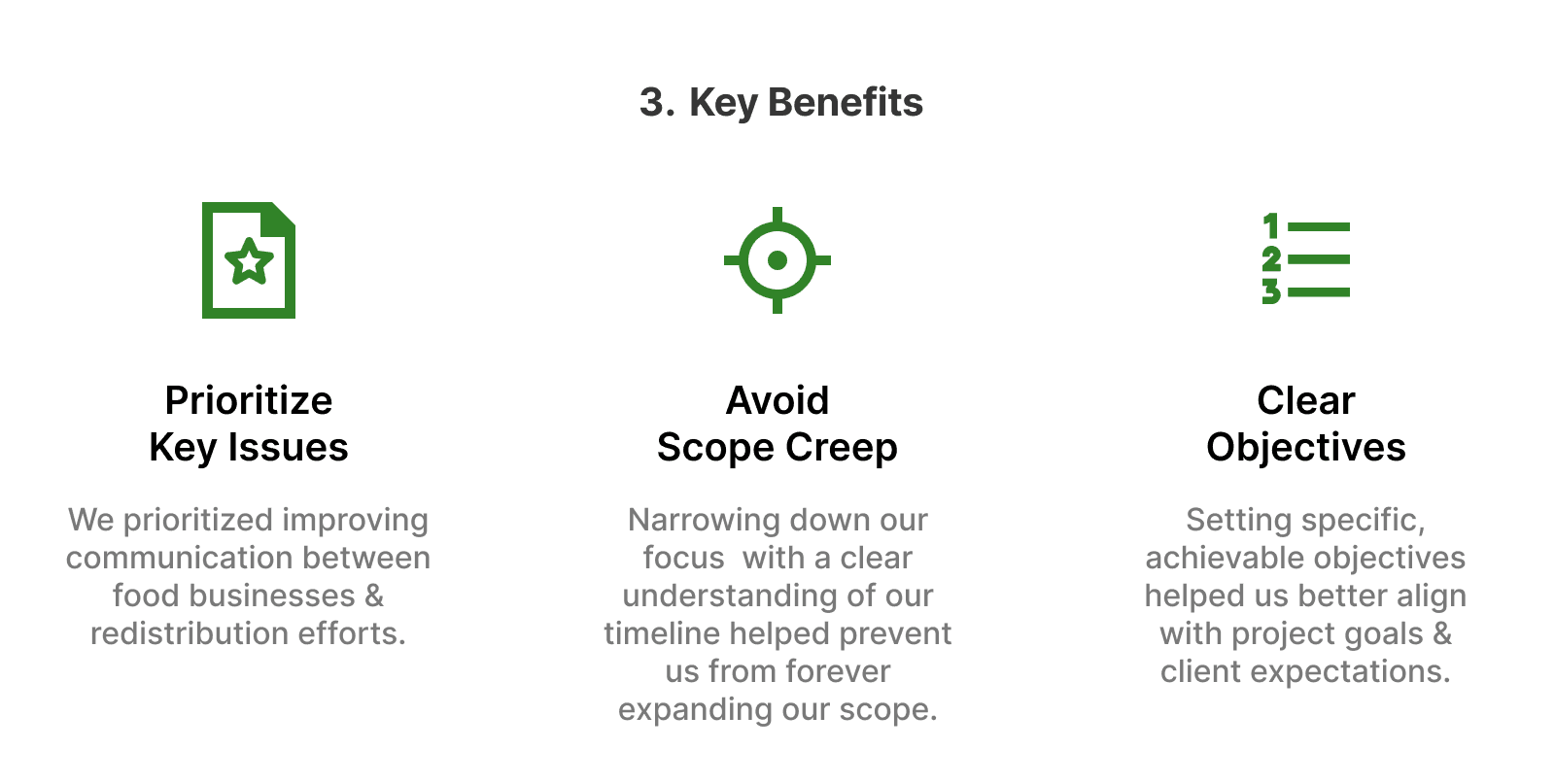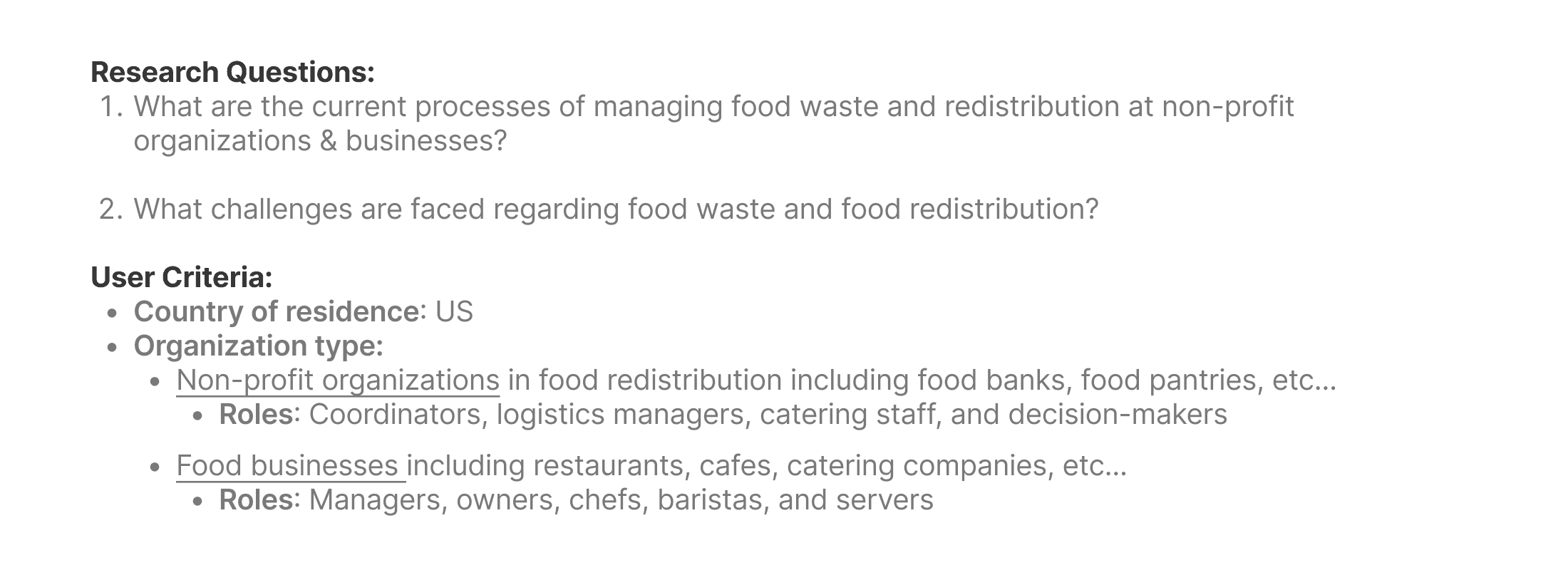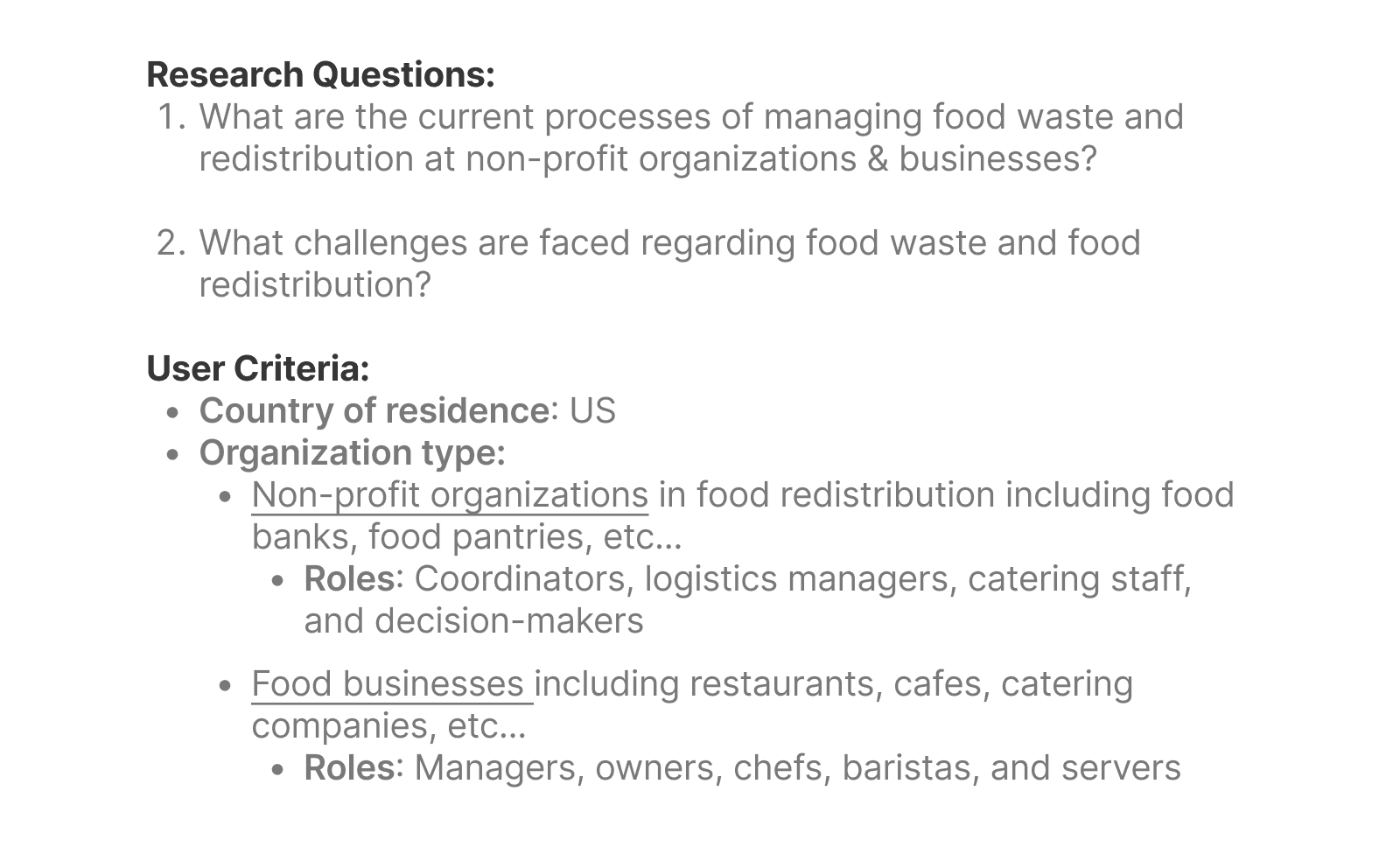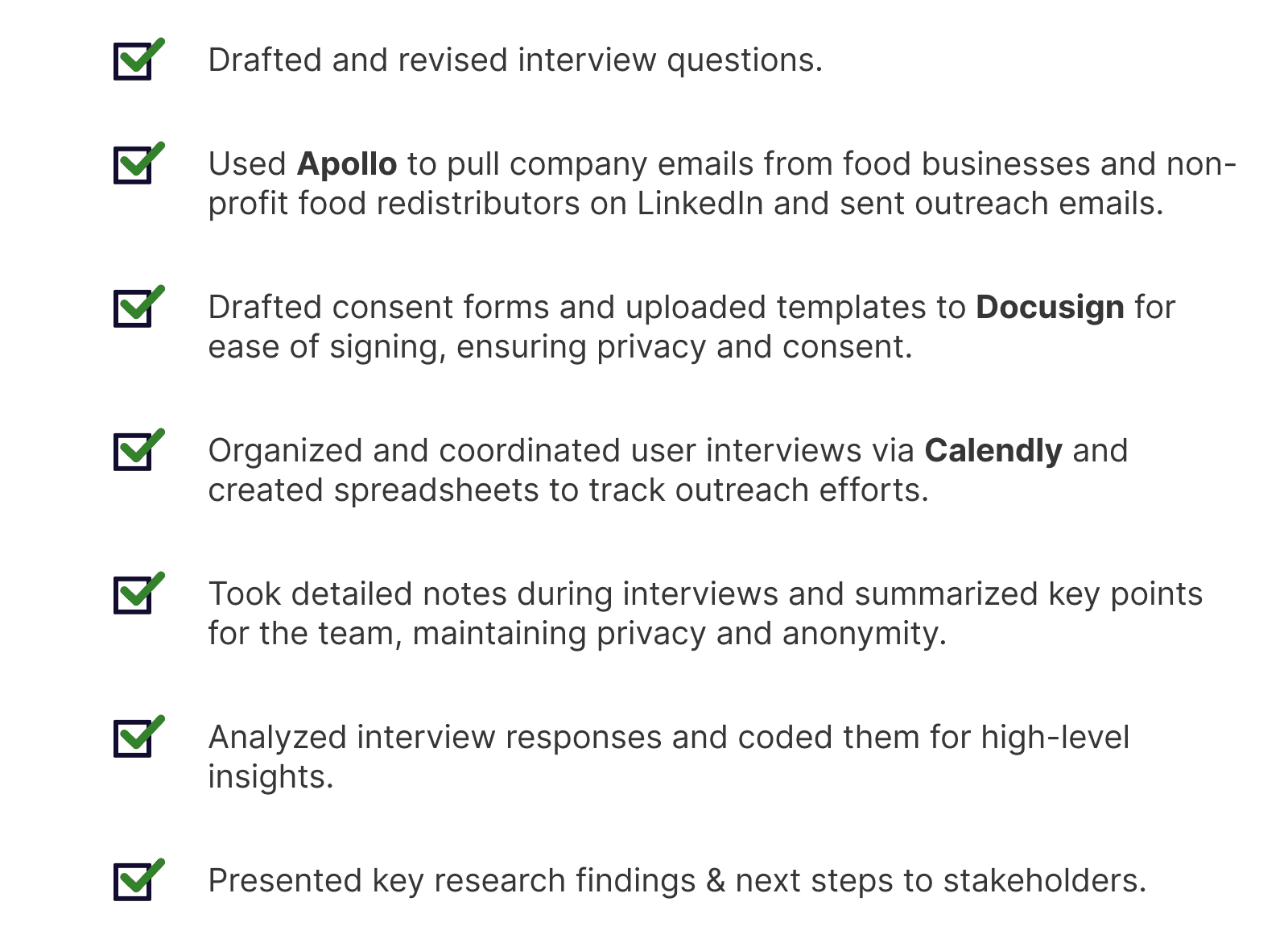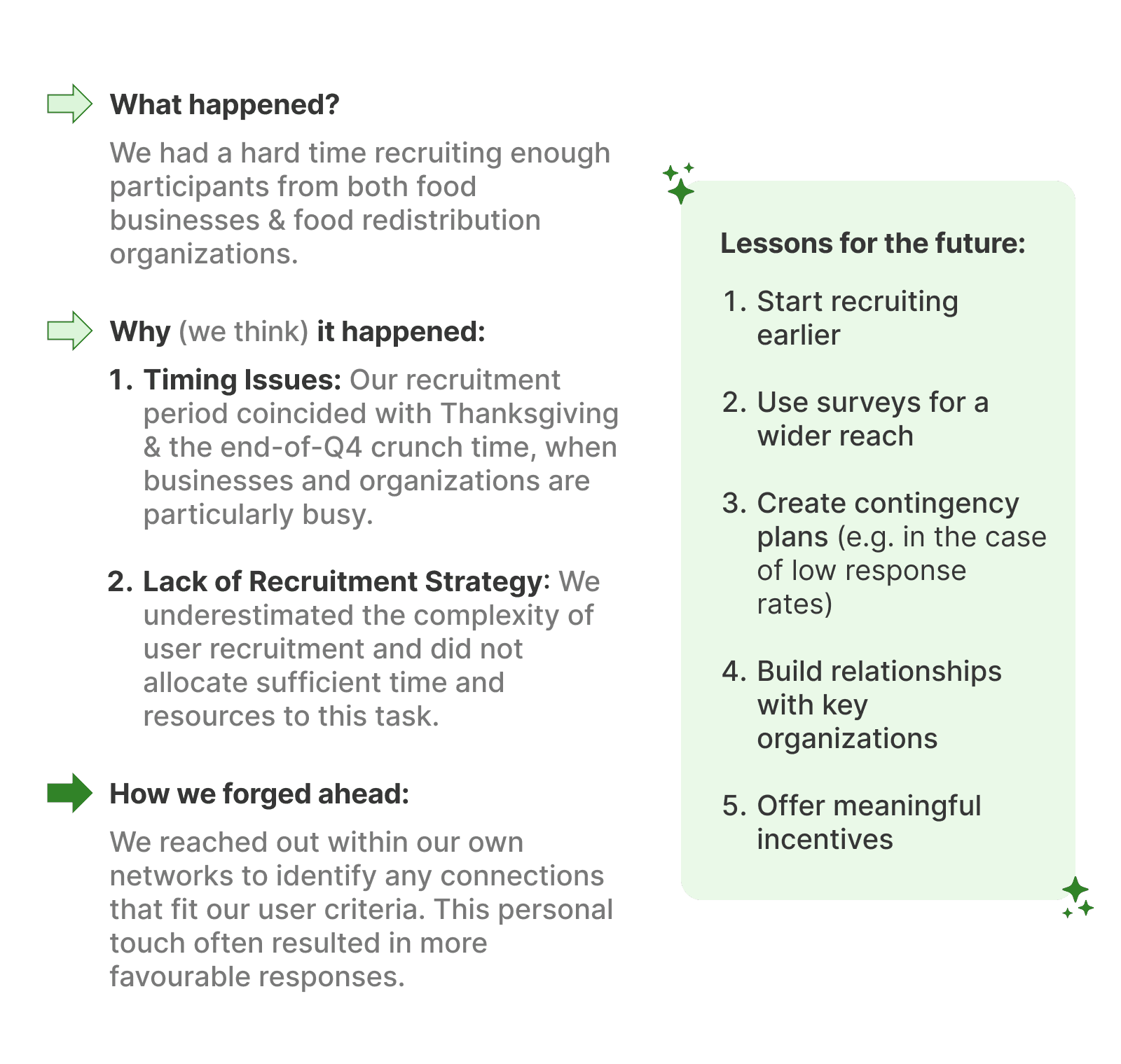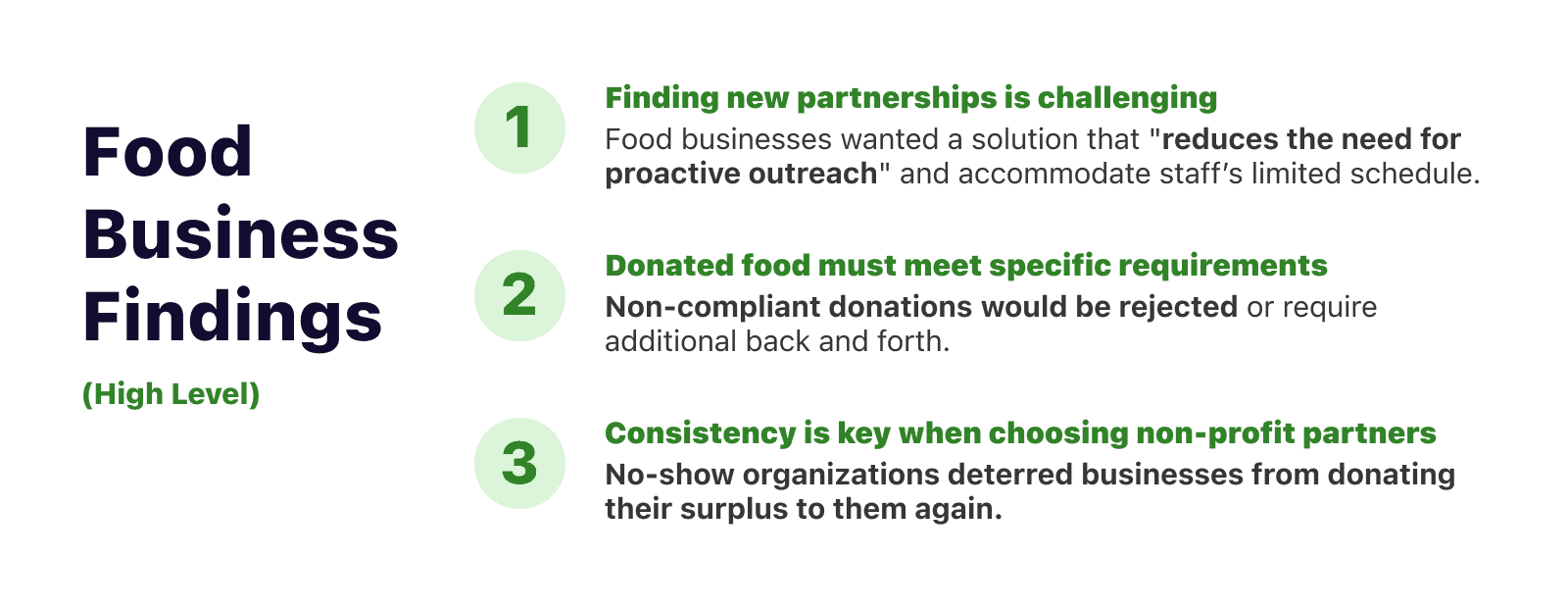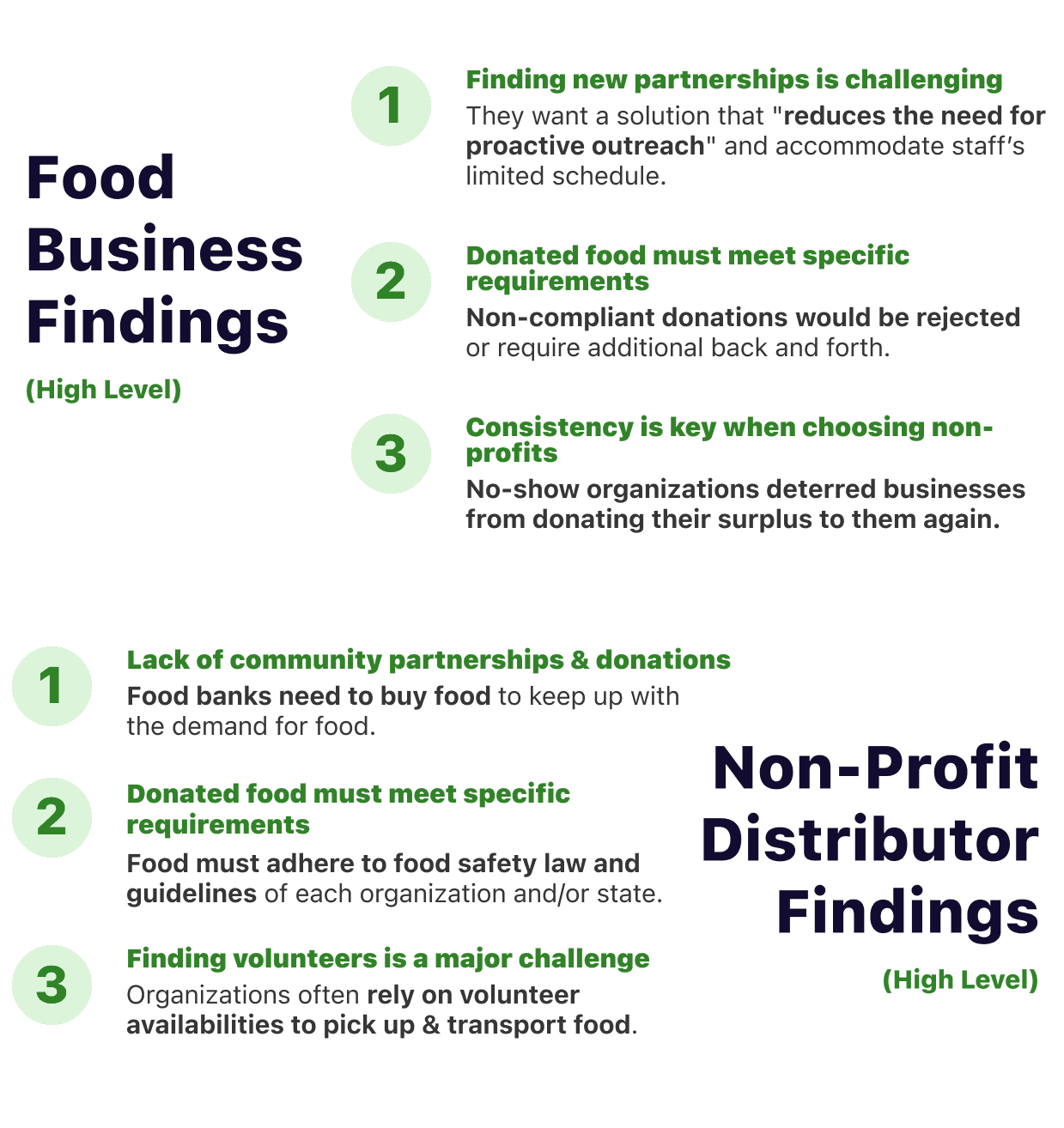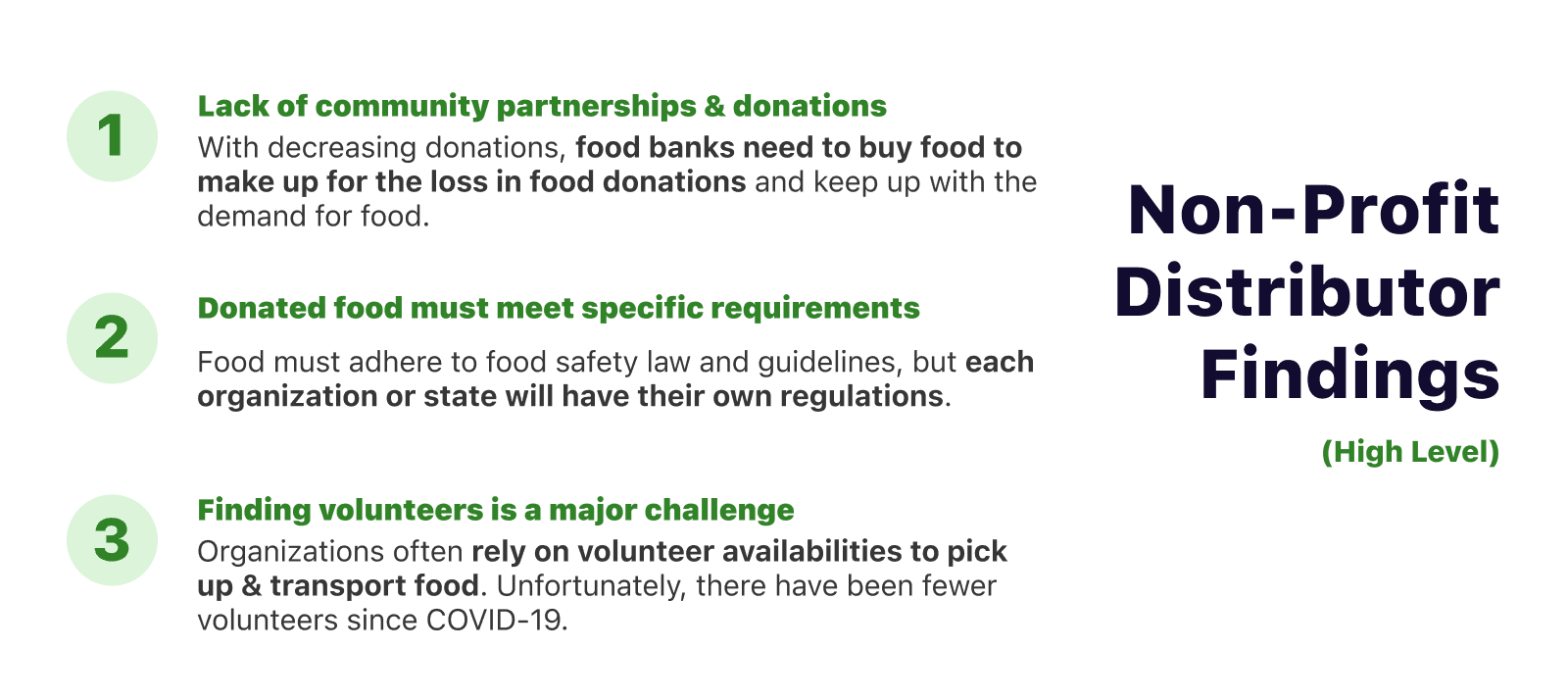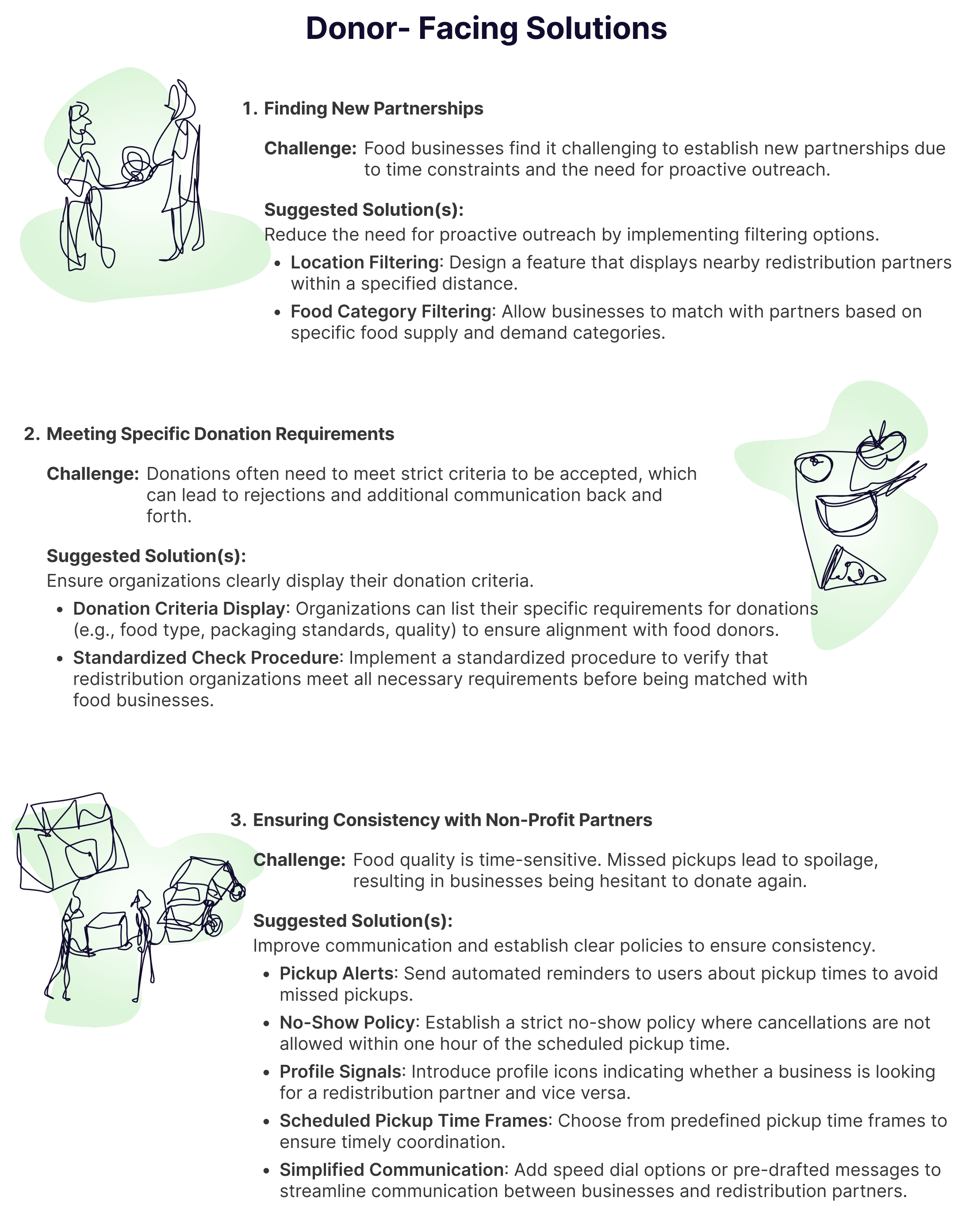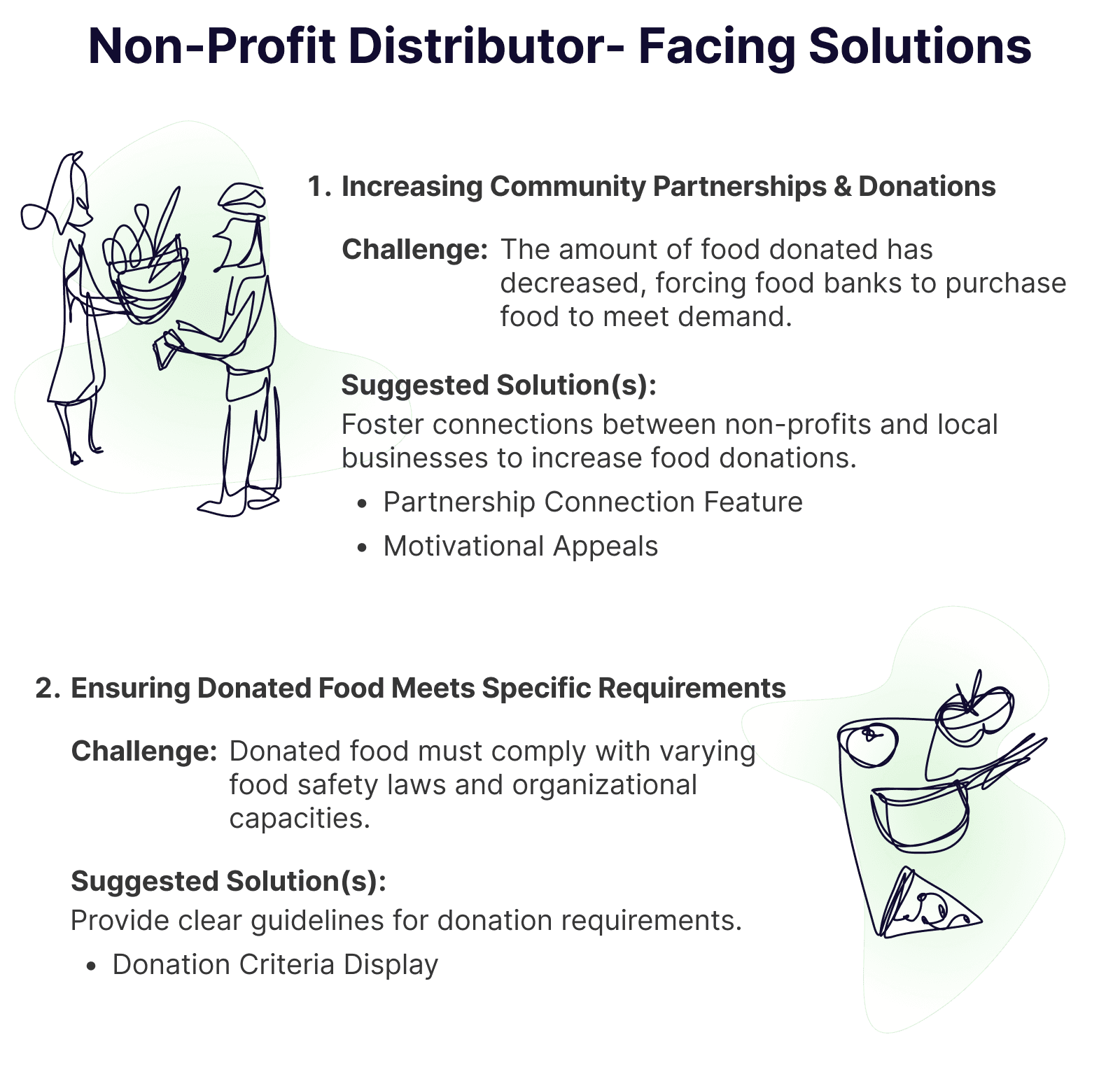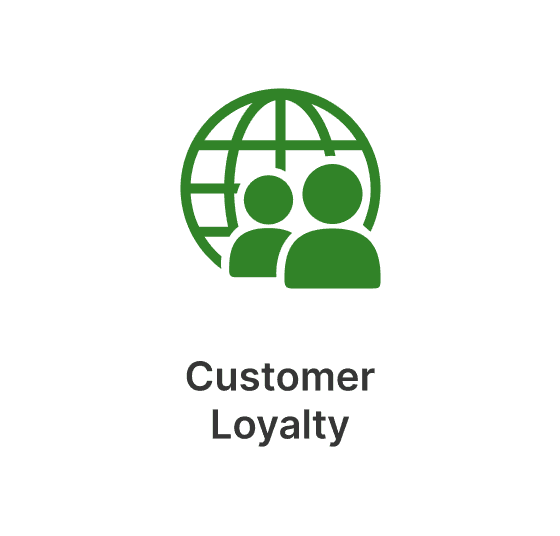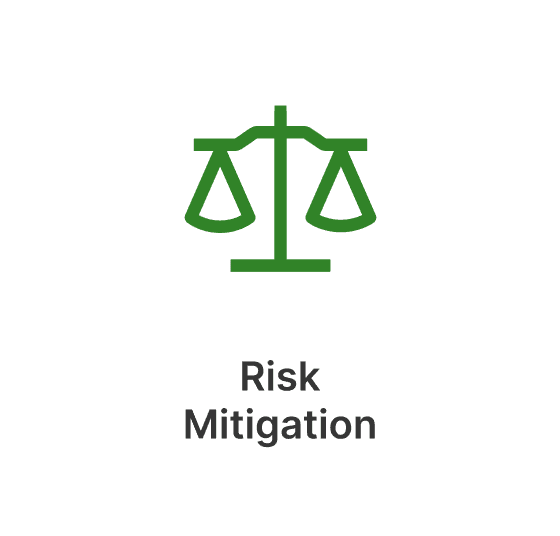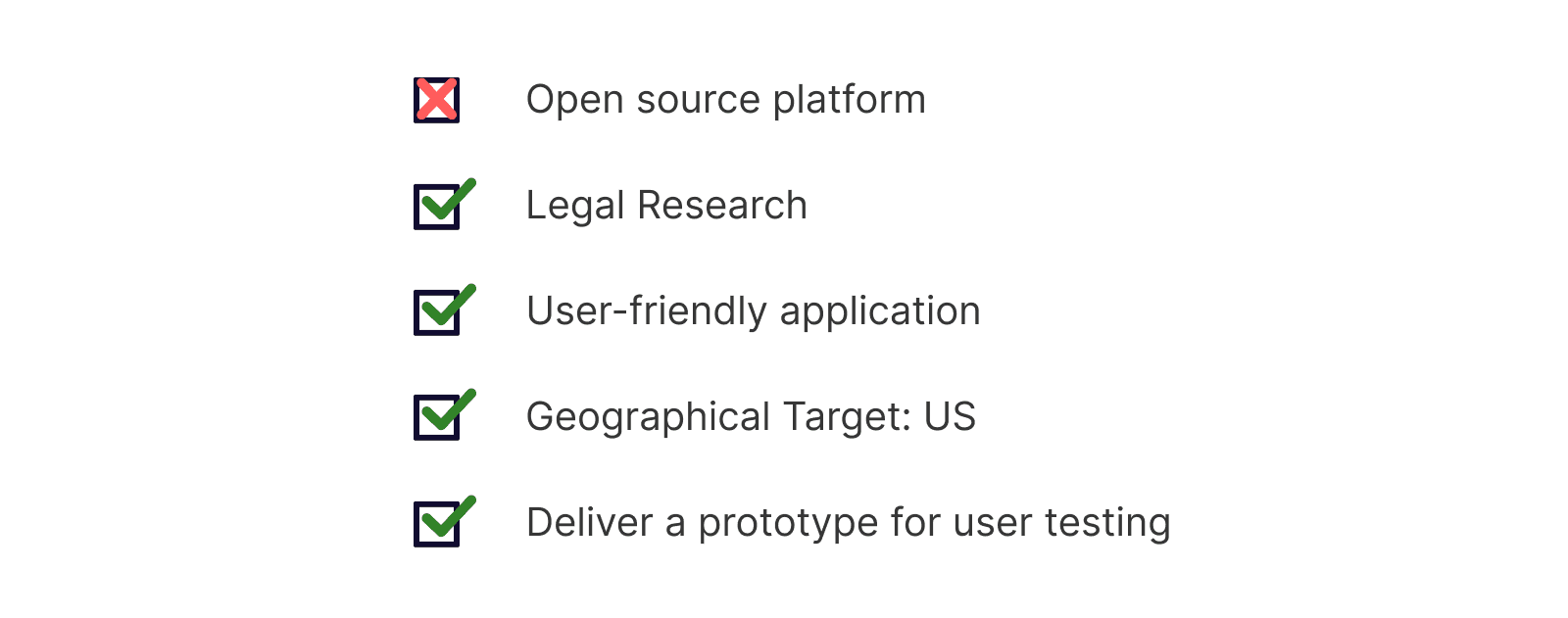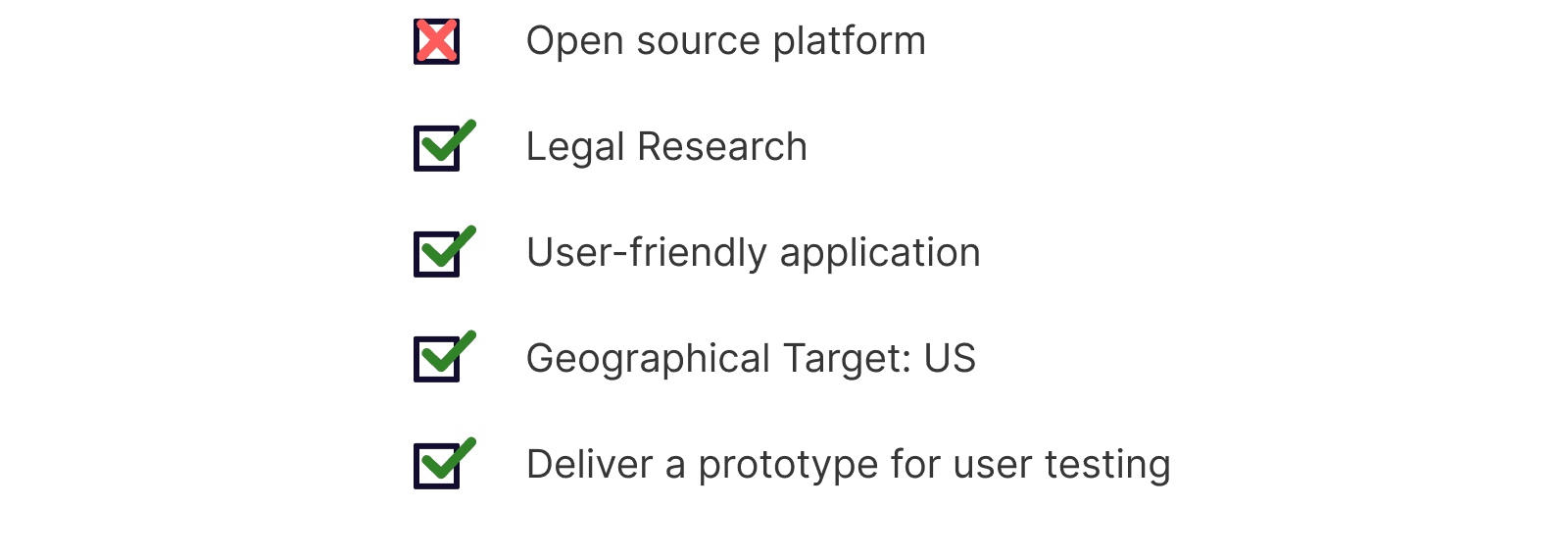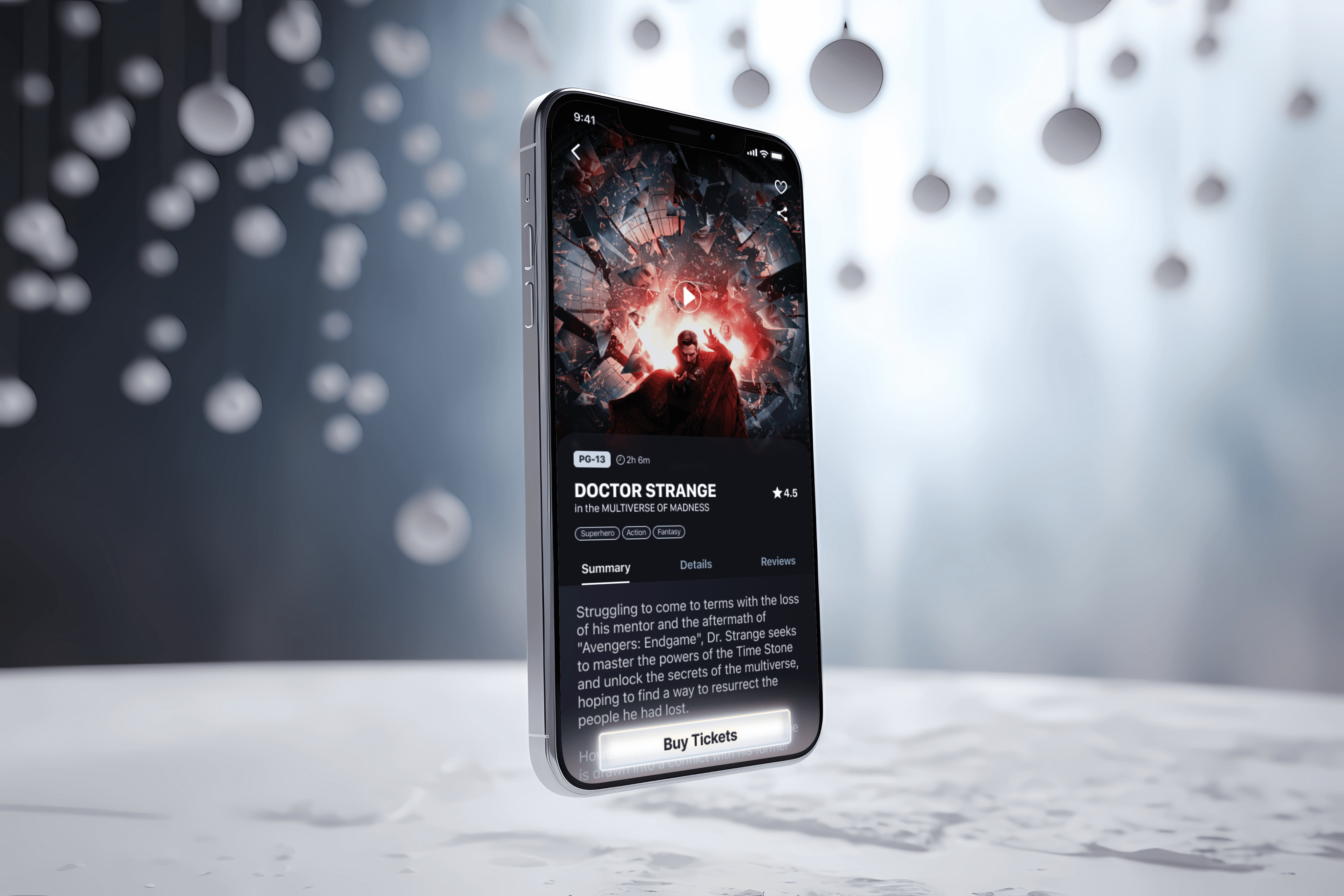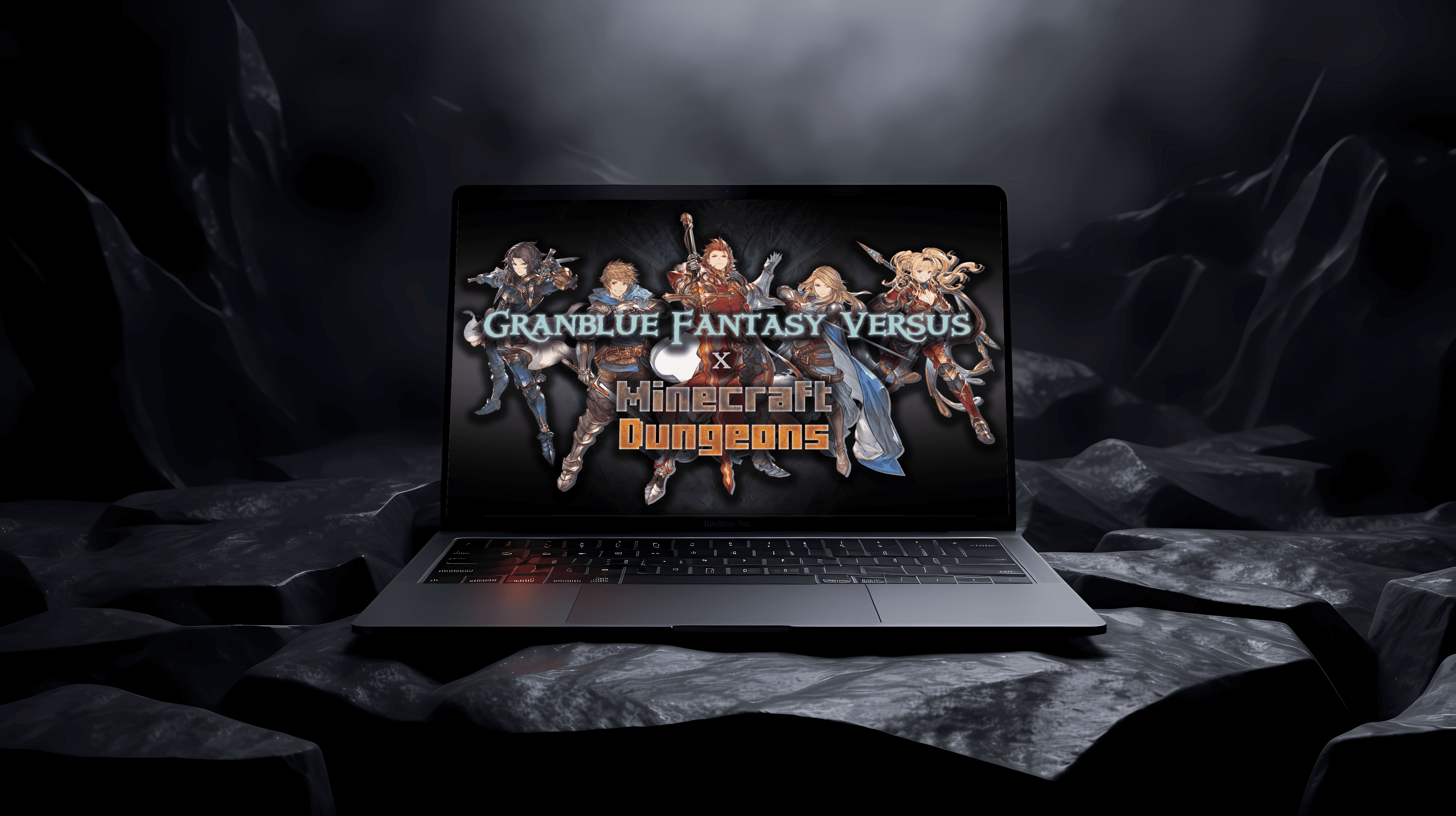At Tech Fleet, our mission was to tackle the issue of edible surplus food ending up in landfills instead of feeding those in need. With Food Distro, we aimed to revolutionize the status quo by bridging the gap between food businesses and nonprofits, offering a crucial link for surplus food to find its way to those who need it most.
Background
Challenge
Starting Phase 2 of this project, we had a lot of questions that needed answering, namely:
What sector generates the most food waste?
Which step along the food chain can we feasibly tackle?
What are the pain points/limiting steps in their current process?
Results
With the completion of Phase 2, we found that:
81% of unsold food & beverages are not redistributed
Inefficient communication between donors & distributors are a main pain point hindering redistribution
Retailers & redistributors want a solution that doesn't add too many extra steps for staff
Snapshot Overview of High Level Findings
New Client, New Goals
Shift in product vision: C2C to B2B
Phase 2 Objectives: UXR edition
Establishing a baseline: Questions to answer
Food waste was a huge monster to tackle and with so many factors, players, and laws involved in food waste a food redistribution, there was a lot to cover.
With so many questions, we struggled with narrowing down the scope of the research and scope creep was a real issue. We only had 8 weeks and time was ticking.
In the end, we turned to our research to guide our way through this hurdle. Using secondary research as our starting point, we narrowed our focus down on addressing 4 main questions:
49% of food wasted in America is generated by food related businesses
Major Findings: Top 3 Food Redistribution Barriers
Baseline Established: Now what?
TL;DR — We wanted to focus on understanding the needs of current redistribution efforts to see if & how we can make their systems better.
Armed with our newfound baseline, we had a check-in meeting with the rest of the teams (Product, Strategy, & Design) and conveyed our findings.
Here's a breakdown of the process, outcomes, and shift in product strategy:
Putting it all together: Interview insights
For a detailed breakdown of all insights — high, mid, and low level— please visit our Google Slides presentation.
From Research to Design
Our research unearthed critical insights that directly shaped the design decisions for the platform.
By understanding the needs and challenges faced by food businesses and redistribution organizations, we proposed features that address these pain points. Here's how our research translated into actionable design improvements:
At the end of the day, it's still a business
How could our platform impact businesses, you ask? Here are a few key benefits businesses can reap from using our application when it comes to food redistribution. (Hover over each image to read more)
Reflections & lessons learned
What's in store for the future?
Reaching the finish line
At the end of our 8-week sprint, it was time to look back and evaluate whether we've successfully achieved our goal for Sprint 2 and met our Client's expectations:
Though we were unable to meet the open-source platform goal for this phase, it will be addressed in the next phases, once development begins.
